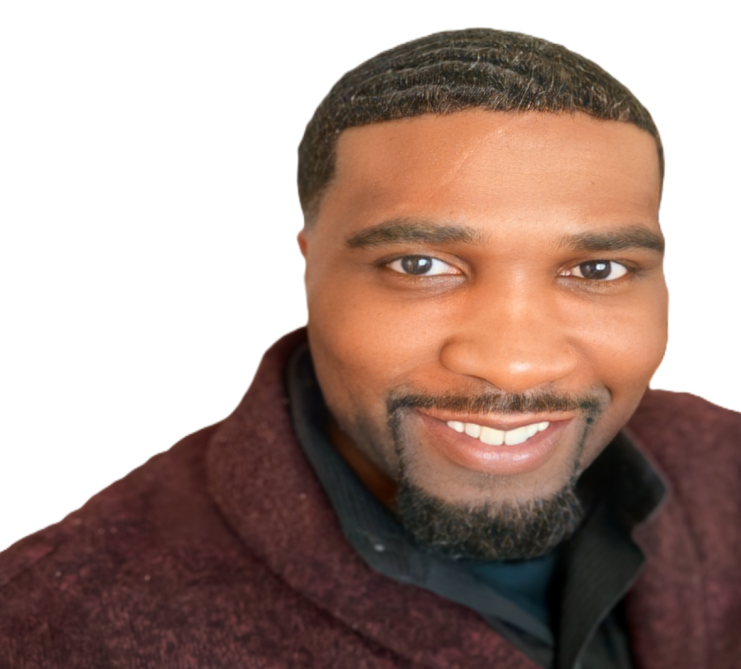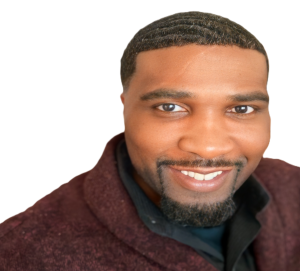
Navigating Student Voice: Empowering Student Self Advocacy while Maintaining Teacher Trust
Student voice is not a new concept at De Anza High School. For over a year, a new school climate has been created where students have been empowered to know they have a say in their education. Everything appeared to be progressing in the right direction until the student voices became louder and more frequent.
Towards the end of the school year, the following statements could be heard within administrative offices and administration hallways. ‘I’m not being taught!!’ ‘I’m regressing.’ ‘I can’t learn this way.’ ‘We try to explain what works for us and it’s ignored.’ The trickle of students, with complaints about their instruction, began to grow into a stream. The student’s voices raised the concerns of their counselors and soon that stream overflowed into the administrative offices with a flood of student discontent about their instruction.
These students were English Language Learners. All students, with complaints, were from ethnic backgrounds in Central and South America. Their complaint was that they were not being given adequate instruction to help them with their acquisition of English. And, oh yes, the students presented data to support their argument. Their progress was not equivalent to their peers in other programs both stateside and in other countries. For example, one student revealed the rate at which they were introduced to new words while in Mexico and, compared it to where they were now, to evidence why they were dismayed with the instruction. Our students deeply believed they weren’t learning and this was extremely frustrating for them.
This presented a challenge for our school’s administration. As the Assistant Principal at De Anza High School, how do we tell teachers that their students don’t think they’re efficient at what they do? Not only that but how do we explain the fact that students bypassed the teacher and went straight to the administration with their complaints? This presented a conflict. How could I walk that fine line where I was responsive to the students’ voices and their concerns but still supportive of the teachers in their role as the instructional leaders of their classroom? My approach to this was a step-by-step process that covered the course of two weeks.
Step One: Look at the data
I did a dive into our ELPAC, English Language Proficiency Assessments for California, scores and the student’s quarterly grades. There was some validity to the student’s concerns as their grades had dropped from the previous year and/or some had not moved up to the next level of English acquisition while their peers did.
Step Two: Provide the students with options promoting their self-advocacy.
Administratively, this step aligned with our school’s vision. At De Anza High School, we create the next future leaders of society. So, we encouraged the students to exercise their voices and to speak at the next all-staff meeting. However, this was declined by the students. The students stated that the language barrier and their fears of speaking directly to staff and possible teacher retribution would make the platform ineffective. Instead, the students proposed another option. The option was a video that would voice the student’s concerns. I agreed with the students about creating their video for the teachers.
Step Three: Collaborate with the district and leadership as to how to bring the student video to the teacher’s attention.
I reached out to an instructional coach and district specialist. I presented the situation and data to them and explained the proposal from the students. My main question to them was ‘how do we present this to the teachers in a way where they don’t feel attacked or unsupported but that causes them to reflect on their instruction?’ The answer was that we must magnify the student voice because that was a direct avenue towards improving race, equity, diversity, and culture in learning. And through improving those areas, the instruction would be more effective.
Step Four: Meet with the teachers to discuss the student’s concerns and get their voice on the situation.
I was completely transparent and told the teachers the student complaints. The teachers also gave their voice regarding the student complaints and the data. The first meeting evolved into a second meeting which grew into a third meeting. Why three separate meetings you may ask? Well, this turned into hard conversations where teachers were being told that students felt they weren’t effective at their profession. Ultimately, as a team, a decision was made to view the student’s video and determine the next steps afterward.
On the day of the video, the entire ELD (English Language Development) department came to watch in addition to 3 additional teachers, whose subjects overlapped with the teachers of our English Language Learners, the EL tutor, and our school Principal. The video was well produced and respectfully cited the student’s concerns. This led to a profound group collaboration where everyone at the table discussed the student’s concerns and how to improve instruction for them. Through this powerful street data, it seemed as though all the pieces had fallen into place.
The following day a teacher came to speak with me privately. They disclosed that they felt completely unsupported throughout the process. Their reasoning was that the students were using their empowerment to dictate to the teacher how the class was going to be. ‘Where does it stop?’ The teacher asked. They continued by explaining that if the students continued to be encouraged to speak out, they would challenge anything they disagreed with and that could, ultimately, lead to a reduction in rigor and best instructional practices. This reintroduced the question: How can we empower the student’s self-advocacy while still supporting the teachers?
As I reflected on the teacher’s statements, I reached out to a former colleague who was a veteran administrator. After explaining the situation to them, their response was that there needed to be not just reflection but a willingness, on the side of the teachers, to look at ways to reimagine their instructional practice. What the veteran administrator stated was that sometimes teachers have a view of their instruction that is set in stone. At some point, they do have to look at how they can be more fluid because each year the students are different and what works one year may not be effective the next. The best way to help with that fluidity is to create a collaborative experience between the students and the teachers instead of a ‘top-down’ approach where the teacher dictates how learning will take place. After the sources of input, research, and my own reflections I developed the following changes:
Change One: Create a trusting, collaborative environment between the teachers and students
I called another meeting with the EL Department and proposed a collaborative approach to learning between the teachers and the students. This would consist of the creation of jigsaw puzzle pieces for each class. With each new lesson, or, unit the teachers would fill out what they would do instructionally for the students in their class and the students would collaboratively fill out the matching puzzle piece with what they would do to work with the teachers. The jigsaw puzzle pieces would be displayed on the wall in the hallway so that the collaborative process between the students and teachers could be visualized over the course of the year. The teachers unanimously agreed to the idea as well as the students when it was presented to them.
Change Two: Develop a clear, system for students to voice themselves and self-advocate
There needed to be a clear definition for student voice otherwise anytime students disagreed with a teacher there would be some type of conflict. The EL team and I decided to invite the most vocal students to join our school’s student climate team which consisted of students, teachers, the campus restorative practitioner, and administration. In this way, a collaborative effort would take place to define student voice and the steps students that should take when a student disagrees with a teacher instructionally or otherwise.
Change Three: Get involved
My last change was to begin having weekly meetings with the ELD Department Chairperson so that we had continual, ongoing discussions relative to the instruction and student progress. I also put in place quarterly release days for the teachers so that they could collaborate and focus on curriculum and instruction. In addition to release days, I began to work with the ELD Department Chairperson to create a quiet space on campus called ‘The Empathy Room’ where the teachers could go, converse, and decompress during the work day.
As the year ended I felt good about the progress in the ELD Department. On the last day of school, a student told me that they felt good about the progress and one of our ELD teachers joined the school’s Instructional Leadership Team (ILT). Then, a great learning experience took place for me.
A week after the end of the school year I brought the ELD student-teacher situation to a collaborative discussion within a Lead by Learning PLC. While paired with a fellow principal from Chicago, I received Supportive Challenge to focus on improving my understanding of the dynamics involved with teacher-student relationships and student voice. I was directed towards three books. One book in particular was called The Four Pivots: reimagining justice, reimagining ourselves. That evening I was able to watch professional speaking by the author Sean Ginwright related to The 4 Pivots and by the next week I was reading the book. A major takeaway I had was that both the students and the teachers had to make a pivot away from what they were used to and towards what would work best for both parties. This would be the ‘lens to mirror’ pivot where instead of looking outwards at others they could look inwards at themselves. This gave me a new look at how to approach the next year and how to facilitate learning for both the teachers and the students, meeting each other together, when it came to effective and targeted instruction.
This overall experience let me recognize my growth areas which are looking into evidence-based research and establishing clear systems. It also promoted a desire for improvement and reimagining instruction for the teachers. Our students felt heard and the adults (myself included) are looking at how we can grow and develop ourselves. The process will be ongoing and, hopefully, by the end of next year, our hallway will be filled with the puzzle pieces documenting just how well we were able to promote student self-advocacy while still supporting our teachers.
 Alvin is a graduate of Morgan State University in Baltimore where he began his teaching career. After thirteen years as a middle school science teacher, Alvin moved up to the high school level and eventually became a school administrator. He has just completed his second full year as a school administrator and his first year as an administrator over English Language Arts (ELA) and English Language Development (ELD). In his spare time, Alvin enjoys traveling and trying new food.
Alvin is a graduate of Morgan State University in Baltimore where he began his teaching career. After thirteen years as a middle school science teacher, Alvin moved up to the high school level and eventually became a school administrator. He has just completed his second full year as a school administrator and his first year as an administrator over English Language Arts (ELA) and English Language Development (ELD). In his spare time, Alvin enjoys traveling and trying new food.
Interested in working with Lead by Learning to support professional learning for your educator and site leaders? Connect with a member of our team to learn more about our partnerships.
